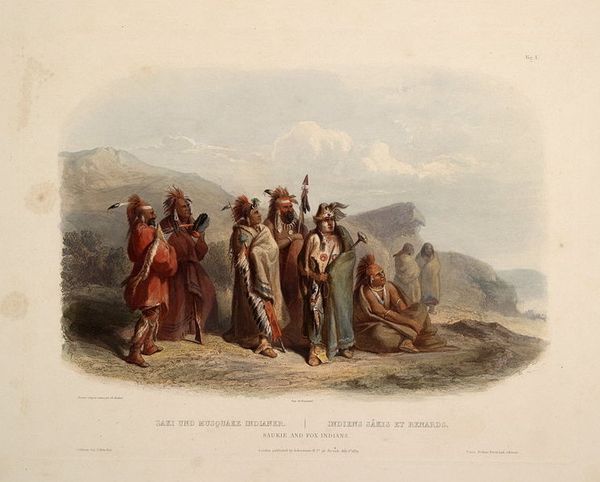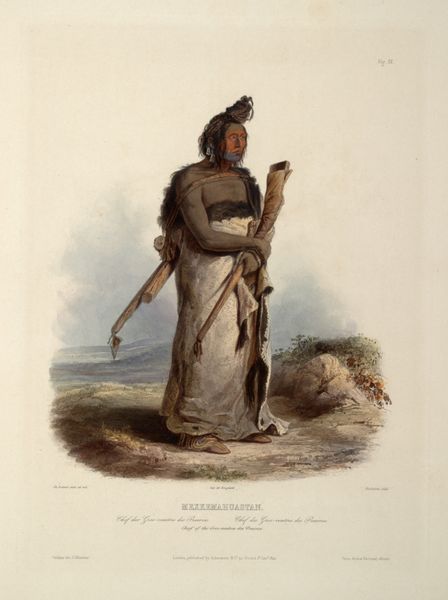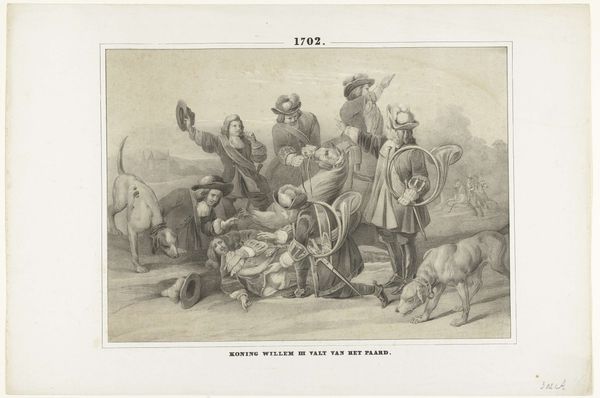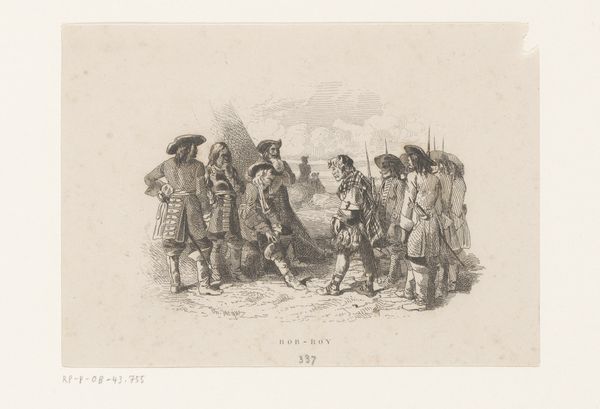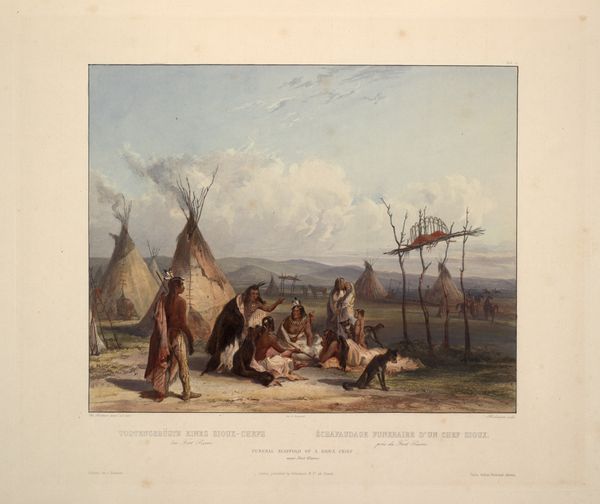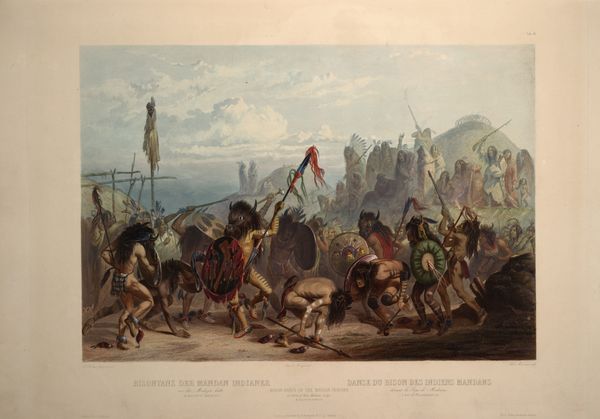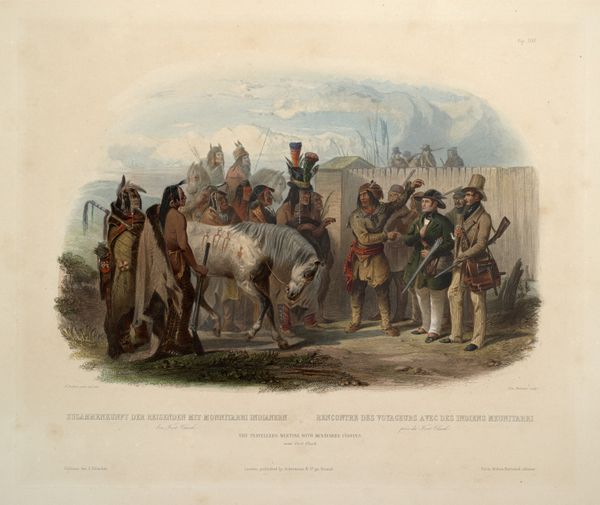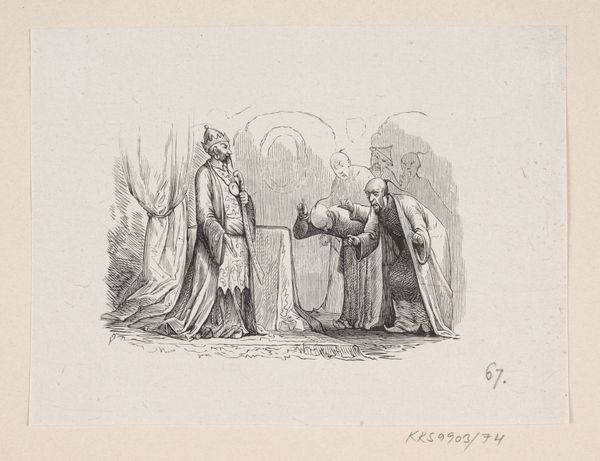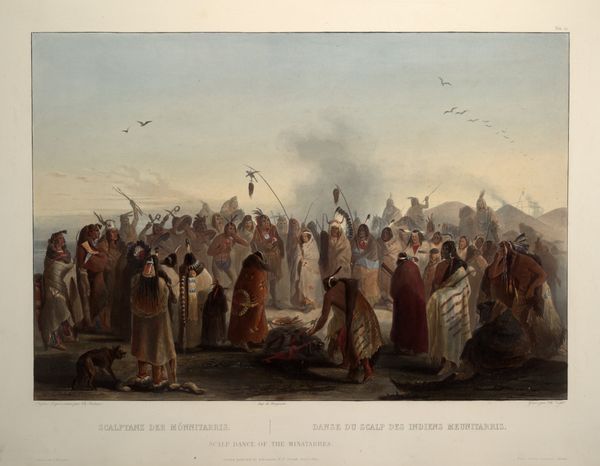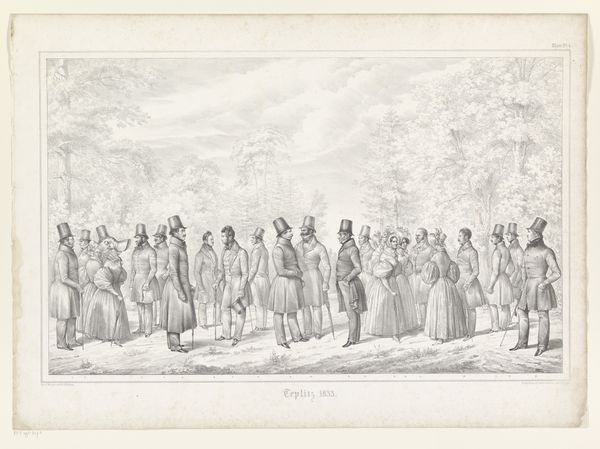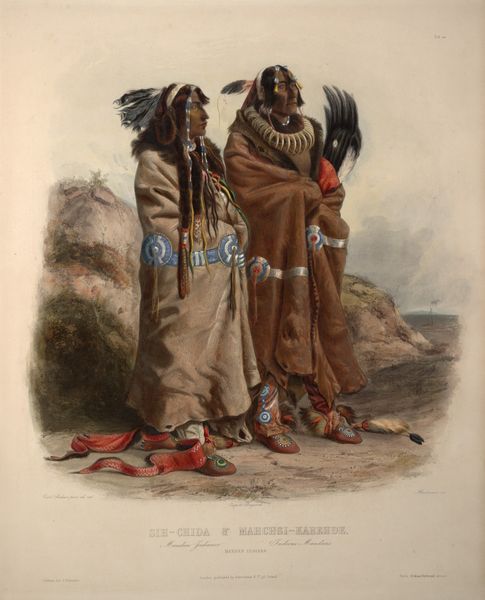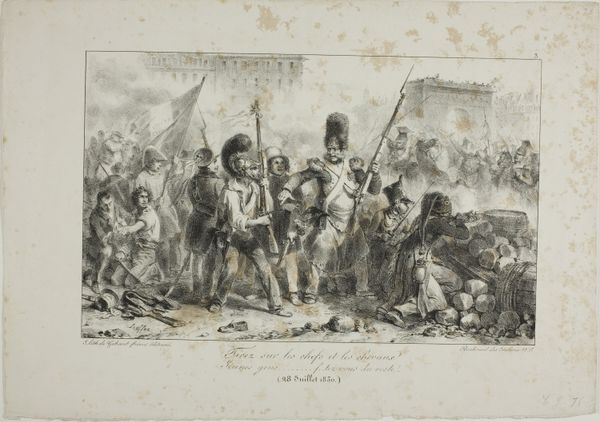
Ptihn-Tak-Ochata, Dance of the Mandan Women, plate 28 from Volume 1 of 'Travels in the Interior of North America' 1843
0:00
0:00
karlbodmer
Private Collection
lithograph, print
#
lithograph
# print
#
watercolour illustration
#
indigenous-americas
Copyright: Public domain
Editor: So this is Karl Bodmer’s “Ptihn-Tak-Ochata, Dance of the Mandan Women,” from 1843. It’s a watercolor and print. I’m immediately struck by the figures; they seem both familiar and remote, dignified, yet the scene feels somewhat… spectral. What do you see in this piece? Curator: I see a gathering, a confluence of symbols deeply rooted in the Mandan culture. The clothing, the headdresses – they’re not mere decoration; they’re visual language. Each element whispers stories of social standing, spiritual belief, and the interwoven connection between humanity and the natural world. Look closely; do you see how the artist depicts not just people but a cultural memory? Editor: You mean in the way their garments seem to define their identities? Curator: Exactly. Each carefully chosen detail, the angle of a feather, the pattern on a robe, transmits specific information. Beyond the immediate depiction of the dance, consider how these symbols perpetuate cultural knowledge, passed down through generations. Editor: So, the dance itself would have a symbolic meaning? Curator: Absolutely! Dances are often ritualistic reenactments of significant narratives. Bodmer, perhaps unintentionally, captures not just an event, but a living archive of cultural identity. What emotional resonance does the dance hold for you? Does it evoke feelings of celebration, solemnity, or something else? Editor: I guess I hadn't really considered how many layers there were! I was more focused on it as just a snapshot of the time. It's really amazing to think about this as a "living archive," as you said. Curator: Indeed, the artist may have thought he was capturing an exotic scene, but inadvertently, he memorialized an intricate system of symbolic communication. A dance of meaning encoded on bodies and repeated in time. Editor: I’ll definitely look at ethnographic art differently from now on!
Comments
No comments
Be the first to comment and join the conversation on the ultimate creative platform.
